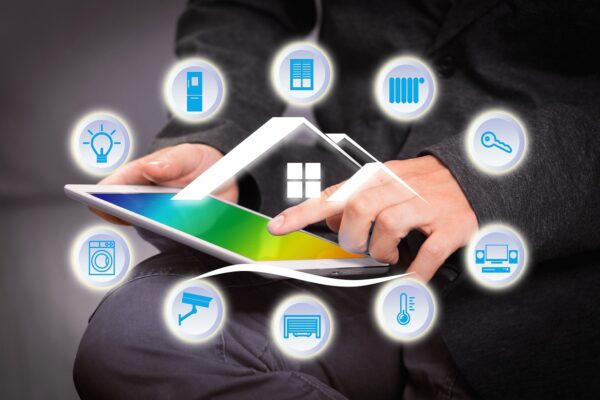Smart house FAQs

Smart House
Also known as a smart home, which refers to a residence equipped with various devices and systems that are connected and automated to enhance convenience, comfort, security, and energy efficiency. These devices make the house more efficient, convenient, and secure for its occupants.
Key Components and Features:
Devices: like lighting systems, thermostats, security cameras, door locks, appliances, entertainment systems, and more. These devices can communicate with each other and be controlled through a central hub or smartphone app.
Automation: Automation is a fundamental aspect of a smart house. It allows devices to operate automatically based on predetermined conditions or triggers.
Voice Control: Many smart houses integrate voice control systems, such as Amazon Alexa, Google Assistant, or Apple Siri. With voice commands, you can control devices, ask for information, play music, and perform various tasks using natural language.
Power saving
Energy Efficiency: Originally Smart houses include energy management systems that help optimize energy consumption. This can involve smart thermostats that learn your heating and cooling preferences, automated lighting controls, energy monitoring devices, and the ability to remotely manage and schedule energy usage.
Security and Safety: Smart houses prioritize security and safety. They may incorporate features such as smart door locks, surveillance cameras, motion sensors, and smoke detectors that can send alerts to your smartphone and allow you to monitor and control your home’s security remotely.
Remote Access: One of the key advantages is the ability to control and monitor your home from anywhere. With remote access, you can use a smartphone or tablet to adjust settings, receive real-time notifications, and even view security camera feeds while you’re away.
Integration and Interoperability: Smart houses aim to seamlessly integrate different devices and systems. They often use standardized communication protocols like Z-Wave or Zigbee to ensure compatibility and allow devices from various manufacturers to work together within a unified ecosystem.
Data analytics and Insights: Smart houses can offer a wealth of valuable data and unsights regarding energy usage, occupancy patterns, and device performance. As a result, homeowners can make well-informed decisions, effectively identify energy-saving oppurtunities
By incorporating these features and technologies, a smart house aims to simplify daily tasks, enhance comfort, improve energy efficiency, and provide occupants with a safer and more convenient living experience.
To know more, click here
Convert your house to a smart one now with OPLIV.
